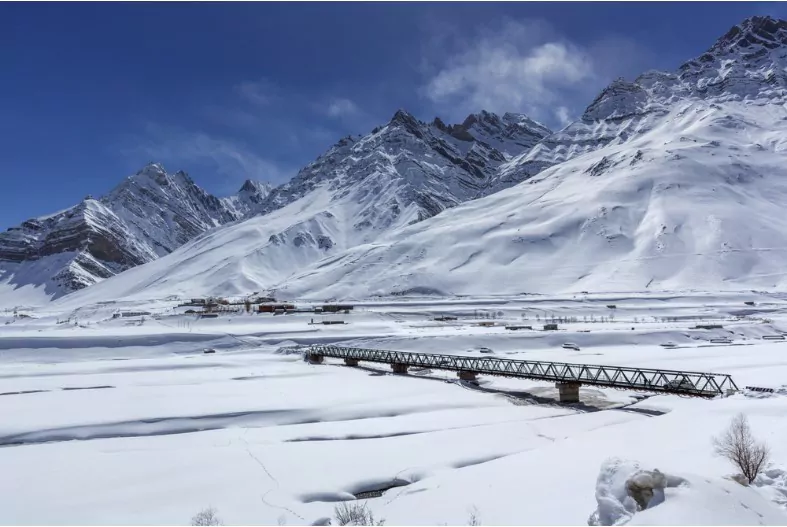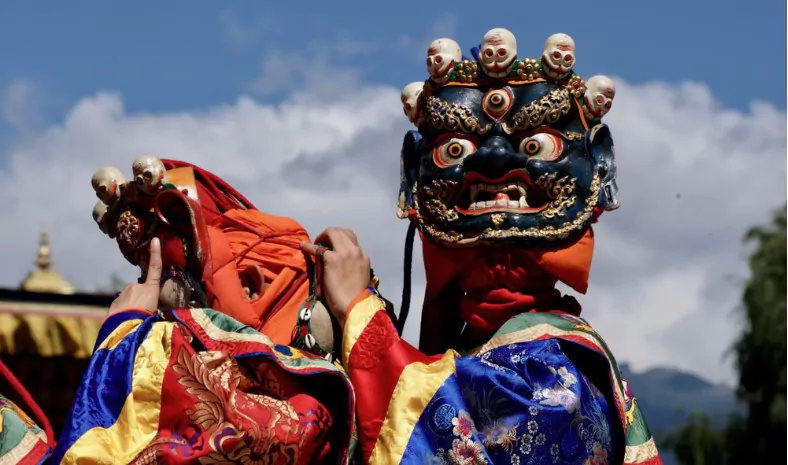Best Time To Visit Spiti Valley: The Hidden Gem

Nestled in the remote corners of Himachal Pradesh, Spiti Valley, often described as the ‘Middle Land’ between India and Tibet, is a surreal and tranquil haven for travelers. A landscape where the azure skies meet the rugged mountains and pristine rivers carve through the cold desert, Spiti is not just a destination but an experience. The question of the “best time to visit Spiti Valley” is more than just about favourable weather; it’s about witnessing the valley in its many, mesmerizing avatars. Whether you are an adventure enthusiast, a cultural explorer, or a nature lover, Spiti promises an unforgettable journey.
1 Understanding Spiti Valley Weather and Seasons
Summer Season (May to July)

The summer months in Spiti Valley are generally regarded as the best time to visit. During this period, the Spiti Valley temperature is pleasant ranging between 15-20°C. It’s the ideal time for a Spiti Valley road trip, as both the Shimla route and the Manali route are accessible. The clear skies and unfrozen rivers present an excellent opportunity for outdoor activities like trekking, camping, and mountain biking across the entire valley.
Monsoon Season (August to September)
Visiting Spiti during the monsoon season can be a bit tricky due to the risk of landslides and harsh road conditions, especially on the Manali side. However, the valley itself receives scanty rainfall, making it possible to enjoy the greenery and blooming flowers. Spiti Valley trip in this season should be planned with a bit of caution, considering the weather conditions and water crossings.
Winter Season (October to February)

Winter in Spiti is for the brave-hearted. With the temperature falling into the sub-zero range, it’s an entirely different world. This time of year is perfect for winter lovers and those wishing to catch a glimpse of the elusive snow leopard in its natural habitat. Roads from Manali side get closed, but the Shimla route usually remains open. It’s a time when the valley is less crowded, and you get to witness festivals like the Losar Festival and Kye Chham.
2 Getting There: How to Reach Spiti Valley
To reach Spiti Valley, one can take the Shimla route or the Manali route. The Shimla route, also known as the Hindustan-Tibet Highway, is longer but less treacherous and remains open for a larger part of the year. On the other hand, the Manali route, encompassing Rohtang Pass and Kunzum Pass, offers a more dramatic and adventurous journey but is only open from late May or early June to October.
3 Captivating Attractions in Spiti Valley
Key Monastery and Dhankar Monastery

These ancient monasteries are not just architectural marvels but also offer insights into the region’s rich Buddhist heritage.
Pin Valley National Park

Home to the Siberian Ibex, Himalayan Wolf, and Blue Sheep, this national park is a must-visit for wildlife enthusiasts.
Chandratal Lake (Moon Lake)

Famous for its crescent shape, this lake is an iconic spot for camping and star gazing.
Kunzum Pass and Chicham Bridge

These high-altitude passes offer breathtaking views of the Himalayas and are popular among adventure seekers.
4 Experiencing Local Culture and Festivals

Spiti is not just about its landscapes; its culture is equally fascinating. The Kye Chham and Losar festivals, showcasing the traditional Devil Dance and folk dances, are a vibrant display of Spitian heritage. The Tshechu festival at the monasteries, with masked dances and religious rituals, is another spiritual spectacle.
5 Accommodation and Spiti Tour Packages
Accommodation in Spiti ranges from homestays offering an authentic local experience to luxury hotels with modern amenities. For a hassle-free trip, consider opting for the best Spiti tour packages, which include visits to all the must-visit places, along with comfortable stays and insights into the local culture.
6 Activities in Spiti Valley

- Trekking and Camping: Trekking through the rugged terrain and camping under the starlit sky is an unforgettable experience in Spiti.
- Mountain Biking: For adventure enthusiasts, mountain biking through the challenging terrain of Spiti offers an adrenaline-pumping experience.
- Wildlife Photography: With its rich flora and fauna, Spiti is a paradise for wildlife photographers.
- Visiting Local Festivals: Experience the local culture by attending festivals like the Losar Festival, Tshechu Festival, and Kye Chham, featuring lamas performing the Devil Dance and other folk dances.
7 Tips for Your Spiti Trip
- Acclimatization: Spend a couple of days getting used to the high altitude.
- Travel Insurance: Ensure it covers high-altitude trekking and emergency evacuation.
- Respect Local Customs: Be mindful of the local culture and traditions.
- Stay Hydrated: Keep yourself well-hydrated to ward off altitude sickness.
8 Wrapping Up
Determining the best time to visit Spiti Valley largely depends on what you wish to experience. The summer season is undoubtedly the most popular tourist season for a road trip, offering pleasant weather and accessible routes. The winter months, though challenging, present a pristine, snow-covered landscape, appealing to those looking for extreme weather conditions and solitude. Each season in Spiti brings a unique flavor, making it a year-round destination for those seeking both serenity and adventure.
In conclusion, a Spiti Valley trip is more than just a journey; it’s a chance to witness nature’s unparalleled beauty and a culture deeply rooted in Buddhist traditions. Whether it’s the vibrant summers, the unpredictable monsoons, or the harsh winters, Spiti awaits with its mystical charm.
Community Q&A
About This Article
This article has been viewed 171 times.



